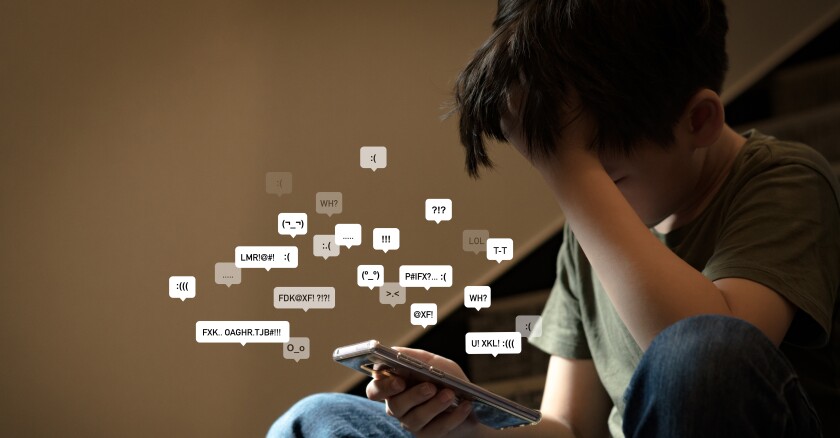Science
NYC Students Face Alarming Rise in Cyber Bullying Rates

Cyber bullying among students in New York City public schools has surged, with a recent survey indicating that approximately 42 percent of students experience regular harassment online. The findings, released from a citywide survey, highlight a troubling trend since school closures due to the pandemic.
The survey revealed that only 25 percent of students reported no incidents of cyber bullying in their schools. Mark Rampersant, the city’s education official overseeing school safety, expressed his concerns during a press briefing. “I’ve been doing this work for a very long time, and unfortunately, I’ve seen the direct effects of cellphone use for young people,” he stated. Rampersant emphasized that cellphones have increasingly become a tool for cyber bullying, significantly impacting students’ mental health.
Survey Insights and Trends
The alarming survey results come as the New York City school system prepares to implement new regulations aimed at curbing the dangers associated with cellphone use among students. In this survey, girls reported higher instances of cyber bullying compared to boys, and middle school students were more likely to be affected than their high school counterparts.
Despite the troubling numbers, there has been a slight improvement from the previous school year, where 43 percent of students indicated they faced bullying on phones and social media. Following advocacy from former schools chancellor David Banks, about 350 schools began enforcing restrictions on cellphone use at the start of the last academic year. By the end of the school year, around 800 principals, representing half of the school system, had imposed some limits on devices.
The recent state law, championed by Governor Kathy Hochul, expands restrictions, now prohibiting cellphone use during lunch and free periods—times when bullying is often reported. This contrasts with previous policies, which focused primarily on classroom usage.
Impact and Future Steps
The 2025 NYC School Survey, conducted from February 10 to April 11, included participation from more than 355,000 students, along with 440,000 families and 62,000 teachers. The data helps school principals enhance their programs and allows the city to measure school quality.
Encouragingly, a growing number of students, approximately 68 percent, agreed with the statement that their school feels safe—a rise of 9 percentage points since 2019. Furthermore, more than 80 percent of students reported feeling secure in various school settings, including hallways and cafeterias. Parental satisfaction also appears high, with 96 percent of families expressing contentment with the education their children received last year.
The new cellphone restrictions will take effect on the first day of school, September 4, 2025. As the city navigates these challenges, school officials remain hopeful that these measures will contribute to a safer and more supportive learning environment for all students.
-

 World4 days ago
World4 days agoCoronation Street’s Shocking Murder Twist Reveals Family Secrets
-

 Entertainment4 months ago
Entertainment4 months agoKate Garraway Sells £2 Million Home Amid Financial Struggles
-

 Entertainment3 months ago
Entertainment3 months agoAnn Ming Reflects on ITV’s ‘I Fought the Law’ Drama
-

 Health3 months ago
Health3 months agoKatie Price Faces New Health Concerns After Cancer Symptoms Resurface
-

 Entertainment4 weeks ago
Entertainment4 weeks agoCoronation Street Fans React as Todd Faces Heartbreaking Choice
-

 World4 weeks ago
World4 weeks agoBailey Announces Heartbreaking Split from Rebecca After Reunion
-

 Entertainment7 days ago
Entertainment7 days agoTwo Stars Evicted from I’m A Celebrity Just Days Before Finale
-

 World7 days ago
World7 days agoKevin Sinfield Exceeds Fundraising Goal Ahead of Final Marathons
-

 Entertainment3 months ago
Entertainment3 months agoCoronation Street’s Carl Webster Faces Trouble with New Affairs
-

 Entertainment3 months ago
Entertainment3 months agoWhere is Tinder Swindler Simon Leviev? Latest Updates Revealed
-

 Entertainment4 months ago
Entertainment4 months agoMarkiplier Addresses AI Controversy During Livestream Response
-

 Science2 months ago
Science2 months agoBrian Cox Addresses Claims of Alien Probe in 3I/ATLAS Discovery





















